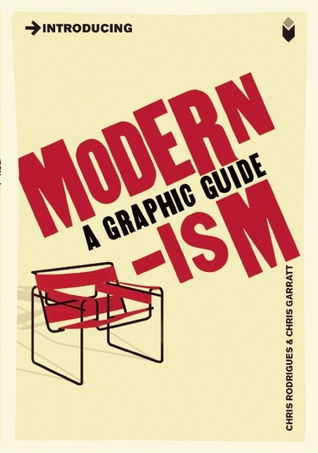Introducing Modernism, by Chris Rodrigues and Chris Garratt (2012), is a graphic guide exploring aspects of the slippery label of modernism as it affected the arts by answering 15 questions, from ‘what is it?’ to ‘has it ended?’ In attempting a definition, it starts with the idea that modernist works can be characterised by their difficulty, but thankfully the same cannot be said of this resolutely traditional treatment of the subject.
The authors attempt to pin down what characterised modernism, how it developed as a response to changing social, political and economic conditions, who its most influential practitioners were, and how it was disseminated in the wider culture. The book captures the ferment of the times in which modernism flourished, and the range of intellectual and artistic movements that fed into it, in an accessible manner.
However, modernism is too loose a concept to be confined within the spaces of a slim graphic guide, so the format’s constraints allow little opportunity to explore the subject in depth. The result is a basic overview, though it throws in a prodigious number of names, at least the best-known ones (its ‘icons’, as it were), so some background knowledge of the figures discussed would assist understanding.
As is the general issue with the graphic introductions, the pictures add little to the information (a particular disappointment when so much of modernism is visual) but pad out the word count. Using the space for extra text would have benefited coverage of the subject, and it hardly seems likely that potential readers wanting to learn about modernism will be attracted because of the cartoons.
One comes away with some idea of what modernism includes, but not necessarily what defines it, which feels suitably modernist itself. The concluding thoughts on what happened to it, and its legacy, are disappointingly inconclusive, but the questions forming the spine of the book are worth asking, and may serve to stimulate further exploration of this most fruitful period in western culture.

